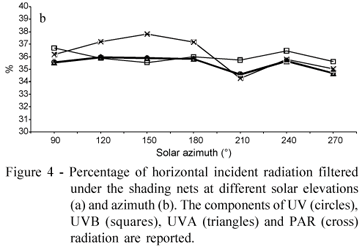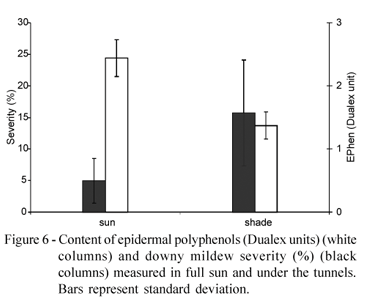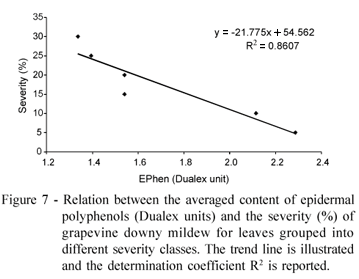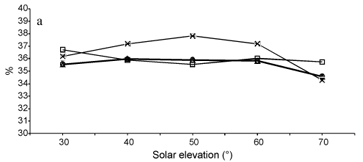Solar radiation plays an important role in the development of some fungal diseases due to its direct action on the microorganisms and also its indirect effect on the production of specific plant compounds. This experiment examined the effect of two light environments (100% and 35% of full strength) on the polyphenolic content of grapevine leaves and quantified their relation to resistance to downy mildew (Plasmopara viticola). Leaf epidermal polyphenolic contents were non-destructively measured during the growing season 2006 using the Dualex chlorophyll fluorescence-based portable leaf-clip. The experimental design consisted of six parcels of 30 vines and measurements were performed on the 12 central vines. The leaves were inoculated with a sporangia suspension containing 50,000 sporangia of P. viticola per mL and the disease severity was assessed after the appearance of symptoms. Leaves maintained at 100% sun had high polyphenolic content and significantly lower disease severity compared to leaves under shading nets. These results indicate an inverse relationship between produced polyphenolics and downy mildew severity.
Ultra-violet radiation; photosynthetic active radiation; polyphenolics; downy mildew; resistance









